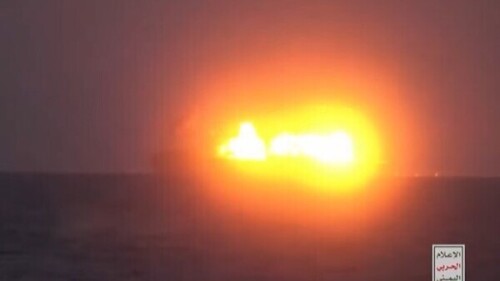Emblem of Liwa Khaybar, featuring the Syrian flag and a scorpion (hence the inscription “al-'Aqrab"- “The Scorpion"- referring to the group’s leader). |
The moniker of “resistance” (muqawama) is common to pro-Assad militias (e.g. The Syrian Resistance and The National Ideological Resistance in Syria): hardly surprising given Syria’s membership of the “resistance” bloc led by Iran. The militia that is the subject of this profile fits into this trend: al-Muqawama al-Wataniya al-Souriya: Liwa Khaybar (“The Syrian National Resistance: Khaybar Brigade”). Unlike the other militias mentioned above though, there is very little information available publicly about this group.
However, I was able to get in touch with the leader of Liwa Khaybar, who calls himself Abu Ja’afar (aka The Scorpion/The Scorpion of Homs). He describes his militia as an auxiliary force for the Syrian army that he founded three years ago (i.e. late 2012-early 2013), but it also so happens that Abu Ja’afar claims to be one of the founders of the National Defence Forces (NDF) branch in Homs. Therefore, Liwa Khaybar and the NDF in Homs emerged at roughly the same time.
Indeed, overlap between some NDF branches and militias is also apparent in the case of Quwat al-Ridha (Syrian Hezbollah) and the Homs NDF, as well as the Damascus NDF and Liwa al-Sayyida Ruqayya, which is affiliated with Iraqi Shi’a militia Kata’ib Sayyid al-Shuhada’. That said, it should be made clear that the issue of overlap is different from formal affiliation: that is, these militias are not official divisions of the NDF, unlike (say) Katibat al-Jabal that is part of the Latakia NDF. Rather, particular leaders and individuals may have membership in multiple groups at once.
Left: Abu Ja’afar, leader of Liwa Khaybar. Right: Note the car in the background featuring Liwa Khaybar’s emblem, with portraits of Assad and Hezbollah leader Hassan Nasrallah. |
Similar to Quwat al-Ridha, Abu Ja’afar says that most of the members of his group come from Homs, but he denies having links with Quwat al-Ridha, though he says that “perhaps there is some logistical support only.” In terms of numbers and operations, one should be careful not to exaggerate the importance of this force. While Abu Ja’afar claims thousands of recruits for Liwa Khaybar and operations throughout Syria, he says that until now the group has had some 32 “martyrs” (fallen fighters), including his four brothers.
From recent publicly available information, on 10 October 2015, as Russian airstrikes were underway and regime offensives were launched on multiple fronts throughout northern Syria, the group claimed to be operating in the western Hama countryside (the Sahl al-Ghab area, with the aim of pushing into Idlib province), declaring that “Khirbat al-Naqus and al-Mansura have been liberated, and now the advance is going towards Tel Wasit and after that towards Jisr al-Shughur.” This followed on from some notable posts in the previous month: on 13 September 2015, Liwa Khaybar denied that its leader Abu Ja’afar had been killed, and on 21 September 2015, Abu Ja’afar wrote that “history will record epic battles of heroism that you will see in the next few days in the north of Syria, God willing.” The latter of course refers to the preparations that were being made for offensives to be launched with Russian air support.
Overall, Liwa Khaybar is a minor player in the Syrian conflict but serves as yet another example of militiafication on the Assad regime side.
Update (5 January 2016): some readers have suggested a comment on the name “Khaybar” in the brigade’s name. Khaybar is a location where Muhammad fought and subjugated Jews who opposed him, hence the common chant “Khaybar Khaybar ya Yahud, Jaysh Muhammad sawfa ya’oud” (Khaybar Khaybar oh Jews, Muhammad’s army will return”). Suffice to say that “Khaybar” is a recurring reference in ‘resistance’ propaganda. See, for example, the songs “To Ali I Belong” and “The Expansion of Ali is Explosing.” It is also the name of a Hezbollah rocket.
Aymenn Jawad Al-Tamimi is a research fellow at the Middle East Forum’s Jihad Intel project.








